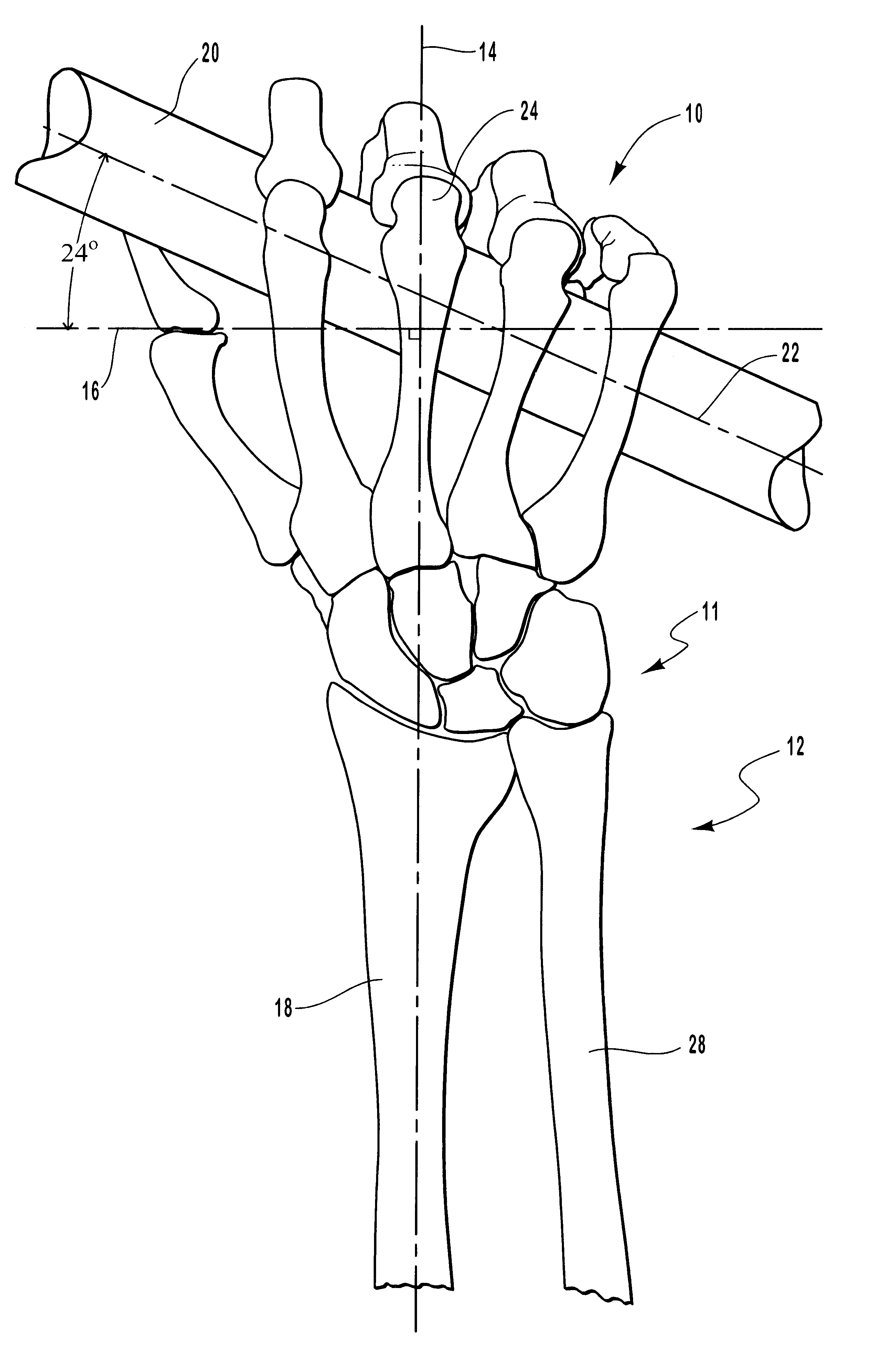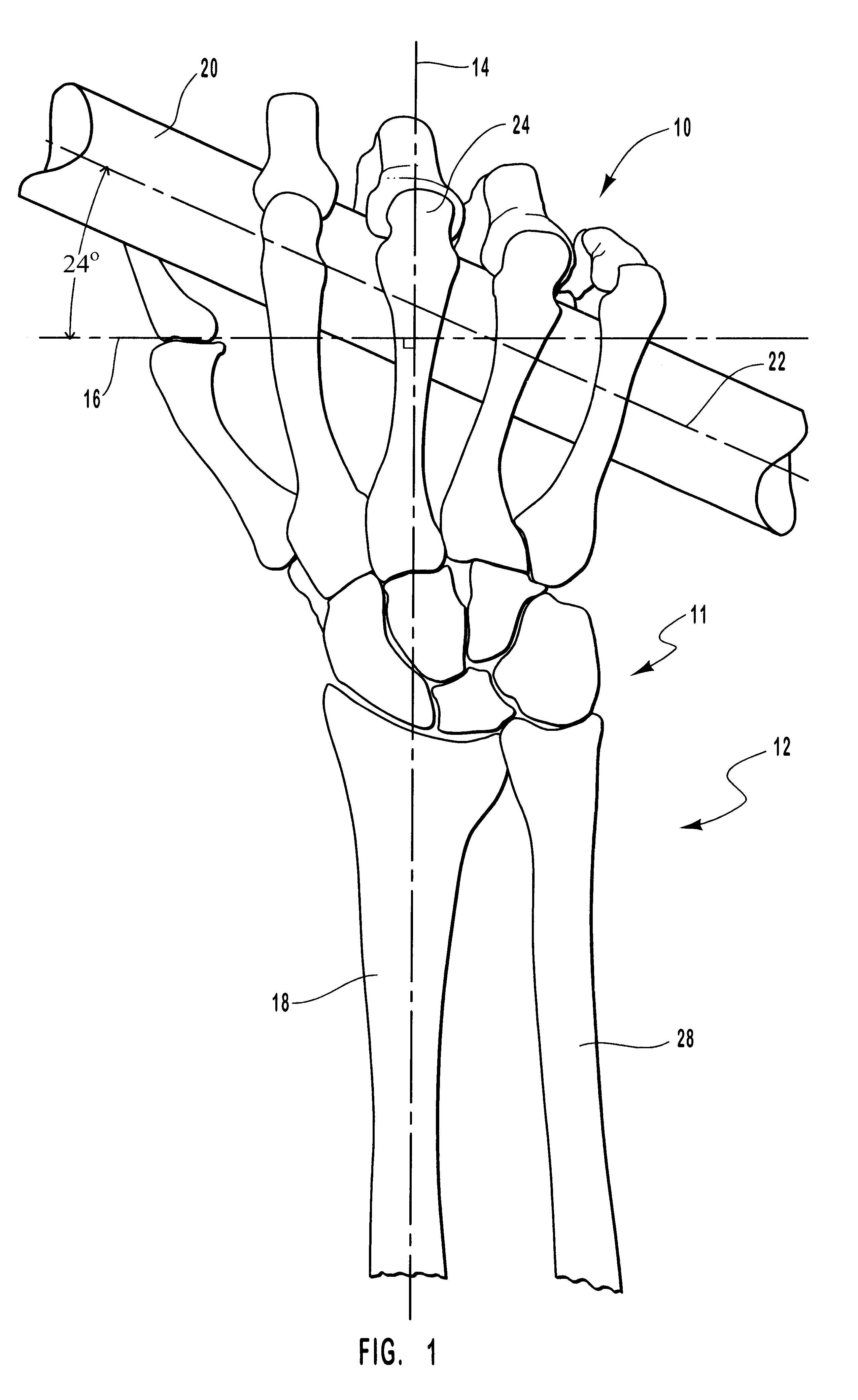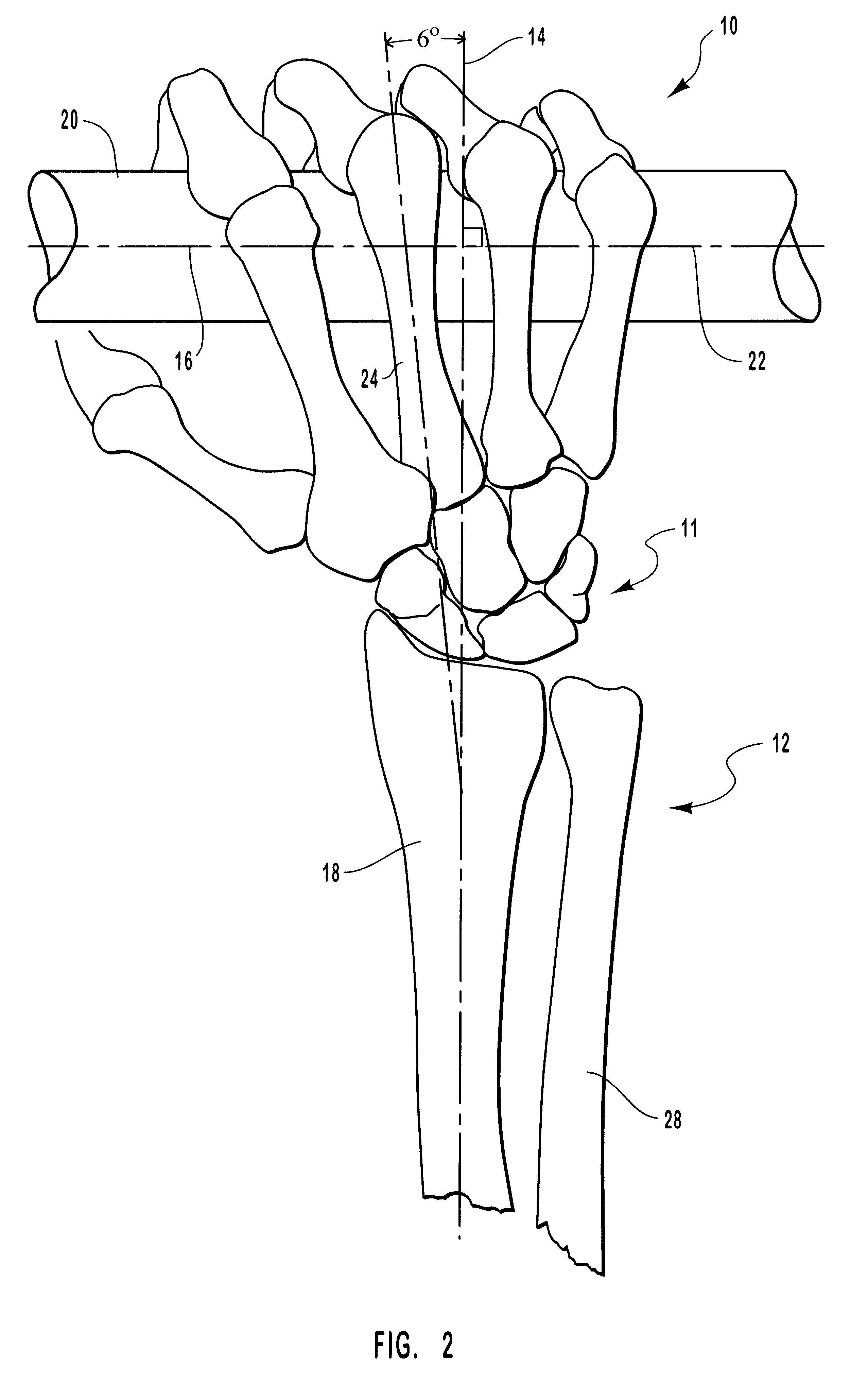Ergonomic paddle grip
a technology of ergonomic grip and paddle, which is applied in the field of ergonomic grip, can solve the problems of fatigue and stress on the user's hand, and achieve the effect of improving blood circulation and reducing the ability of users to grip the paddl
- Summary
- Abstract
- Description
- Claims
- Application Information
AI Technical Summary
Benefits of technology
Problems solved by technology
Method used
Image
Examples
Embodiment Construction
The present invention can be better understood with reference to the drawings where like parts are designated with like numerals throughout. The present invention relates to a ergonomic handle and more specifically to an ergonomic paddle for use in kayaking. X-ray photography was used to study the position of a user's hand while holding a shaft to determine the most ergonomic configuration for the handle.
Referring now to FIG. 1, a drawing taken from an X-ray, illustrates a perspective view of a hand 10 and forearm 12. A vertical line 14 is drawn from approximately the center of the radius 18 into the hand 10. A horizontal line 16 is drawn perpendicular to the vertical line 14. The hand 10 is grasping a shaft 20. The shaft 20 has a longitudinal axis 22 which is angled outwardly from horizontal line 16 at about 24.degree.. With the shaft 20 positioned at about 24.degree. from the horizontal line 16, the vertical line 14 runs from the center of the radius 18 through the center of the t...
PUM
 Login to View More
Login to View More Abstract
Description
Claims
Application Information
 Login to View More
Login to View More - R&D
- Intellectual Property
- Life Sciences
- Materials
- Tech Scout
- Unparalleled Data Quality
- Higher Quality Content
- 60% Fewer Hallucinations
Browse by: Latest US Patents, China's latest patents, Technical Efficacy Thesaurus, Application Domain, Technology Topic, Popular Technical Reports.
© 2025 PatSnap. All rights reserved.Legal|Privacy policy|Modern Slavery Act Transparency Statement|Sitemap|About US| Contact US: help@patsnap.com



